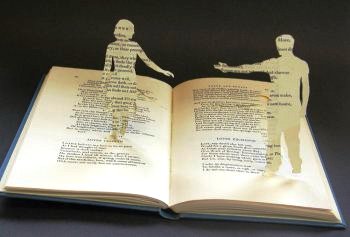In last week’s post, I discussed “Spoken Word” vs. “Written Word”. Today, we delve into how we typically define text and how far we can understand beyond that.
What text means to us
When I think of text, I think of the physical words I am reading as I write this post. It refers to written works of argumentative or persuasive information like books or even online articles. That is the most basic understanding, however it goes deeper beyond books and words.
In Eyman’s article, he writes that Robert de Beaugrande and Wolfgang Dressler define it as a communicative event that meets seven rhetorical criteria: cohesion, coherence, intentionality, acceptability, informality, situationality and inter-textuality. Text as we know it does have several layers and is based on design which Eyman quotes Darwish and Kress respectively. However after this point, this concept becomes even more complicated.
Beyond Words
To my understanding, text is a social technology that includes a multitude of interpretive mediums going beyond just writing. For example, a fragment of pottery from an ancient civilization could be considered “text” because it promotes rhetorical interpretation. Even without words or symbols to read, details such as the material it is made from, its process of creation and its age and condition are up for examination. Then, interpretations of the social and cultural environment from which the artifact comes from are made. Text goes beyond just printed words on a page or even on your computer screen. I would say it is being able to “read more than just words”.
That is where the boundary of my understanding is. Beyond that point, Eyman goes on to describe the beliefs of Johnson-Eilola who uses the terms “gizmo” and “spime” to refer to the digital nature of texts. Thus, text takes its place as a component of the overarching concept of “Digital Rhetoric”.





Leave a Reply